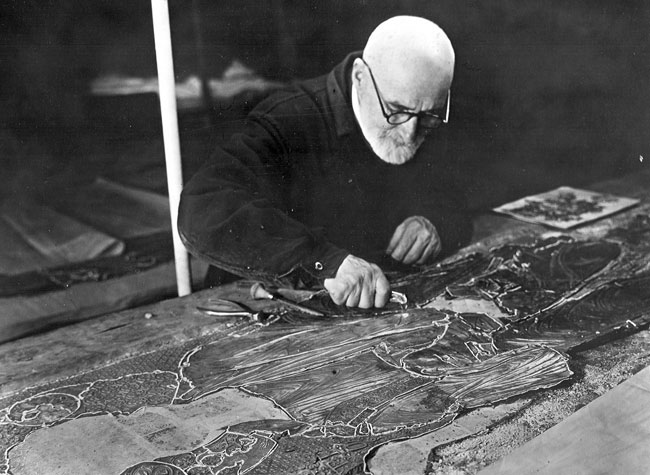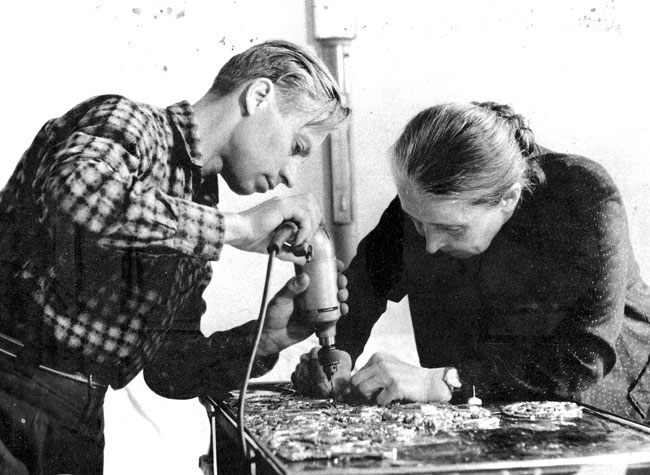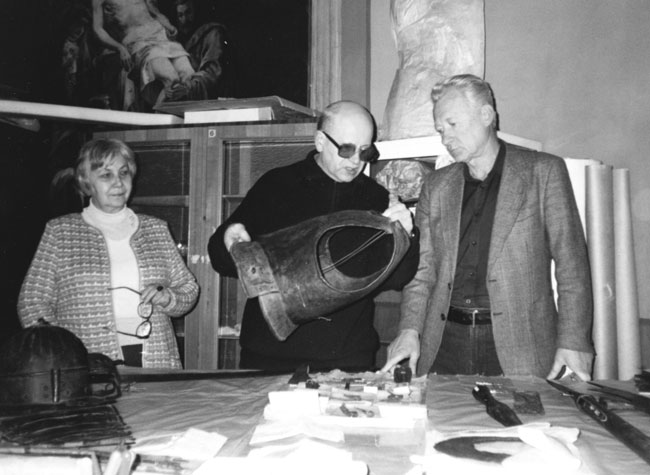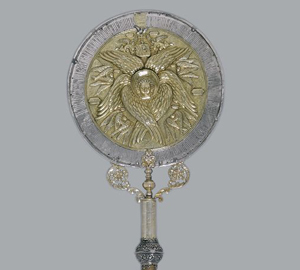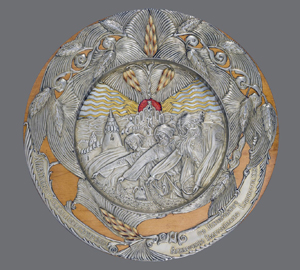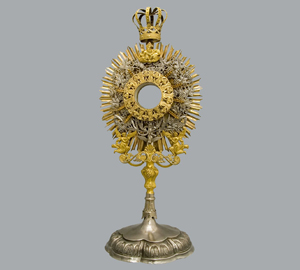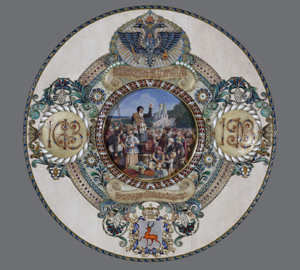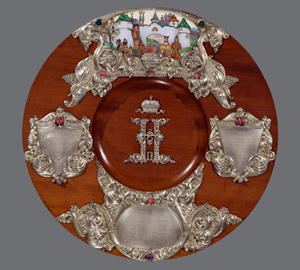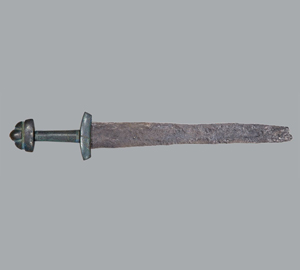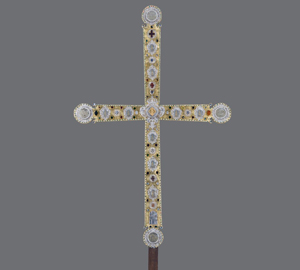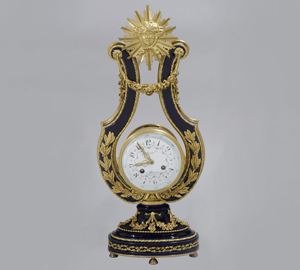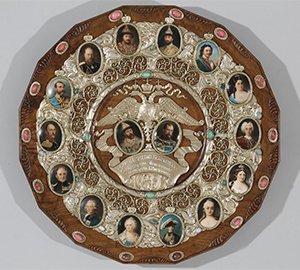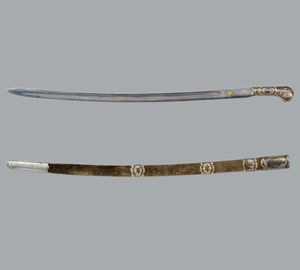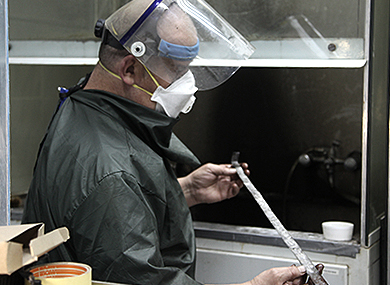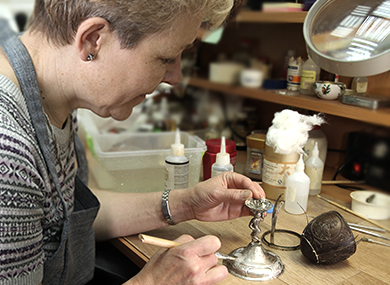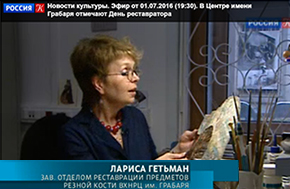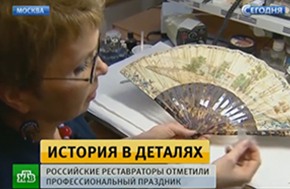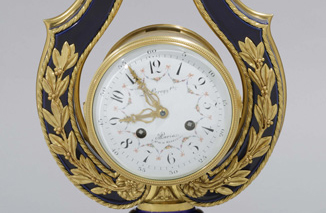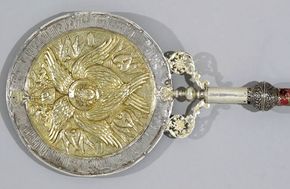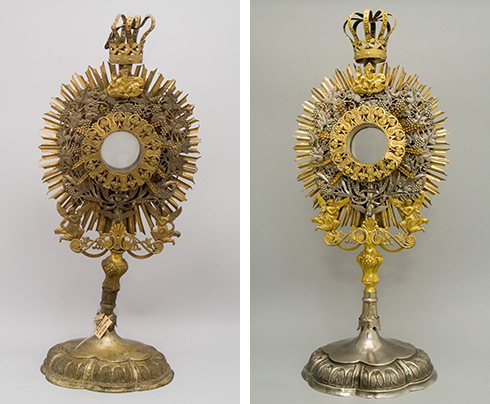
About the Workshop
The workshop for restoring works of art made out of metal was opened at the Grabar Art Conservation Centre in 1945. Various kinds of metal art from different time periods are restored at the workshop. Here, the experts work with ferrous, non-ferrous and precious metals, including gold, silver, bronze, brass, copper and tin. The kinds of metal objects that the workshop deals with include: items found during archaeological excavations, church plates, Old Russian copper casting, weapons, household items, folk objects, and applied art objects such as clocks, watches, lighting devices, and memorial plates.
Approximately 100 metal objects are restored annually
Since its establishment, the workshop has restored more than 4000 exhibits made out of ferrous, non-ferrous and precious metals for dozens of Russian museums. Collections and individual archaeological and ethnographic items have been restored for the Kizhi State Open-Air Museum of History, Architecture and Ethnography, the Taimyr Okrug Museum of Local Lore and History and the city of Petrozavodsk. Restoration works have also been carried out on church objects for the New Jerusalem Monastery and museums in Sergiyev Posad, as well as on memorial weapons for the Novocherkassk Museum of the History of the Don Cossacks. The workshop was responsible for the restoration the 12th-century Korsun Cross at the Pereslavl-Zalessky Museum (which today is one of the main shrines of the St. Nicholas Cathedral at the St. Nicholas Convent in Pereslavl-Zalessky) and the 16th-century sundial at the Ivanovo Museum.
Learn more >The Grabar Art Conservation Centre has been restoring metal art objects for over 70 years
The history of the department, which opened in 1945, is inextricably linked with the famous art restorer and third-generation goldsmith Fedor Mishukov. Among the items restored during the early years of the department's existence were the metal covers of 16th- and 17th-century icons for the Kremlin museums, church ornaments, Romanian Crown Jewels brought to Moscow during the First World War and exhibits from leading museums in the Soviet Union.
Learn more >Gallery of Works
The Restorers
The metal restoration workshop is run by Andrei Sivov, art restorer of the first class. A total of two art restorers and one researcher are employed by the workshop. Two of the workshop's staff are restorers of the highest class, including Honoured Cultural Worker of the Russian Federation V Petrov.

Scientific Research
В мастерской реставрации металла традиционно ведется и активная научно-исследовательская работа. Сотрудники мастерской вместе с химиками и технологами ВХНРЦ постоянно изучают состав и особенности взаимодействия с окружающей средой предметов из металла, поступивших на реставрацию, разрабатывают новые и совершенствуются старые методики, которые затем обсуждаются, дорабатываются и утверждаются на реставрационных советах мастерской и Центра. Результаты работы мастерской и профессиональный уровень реставраторов наглядно демонстрируют отчетные и тематические реставрационные выставки и издания последних лет.
Learn more >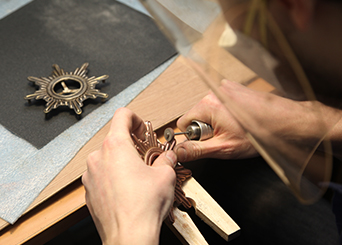
Another aspect of the workshop's activities is the ongoing and meticulous training of interns and apprentices, many of whom are students in faculties of restoration at Russian universities or employees at the restoration workshops of the Tretyakov Gallery, the Pushkin State Museum of Fine Arts, the State Hermitage Museum and other museums.
Media
В 2016-м сделали огромный объем работы: это реставрация темперной живописи Новгорода, Пскова, Старой Ладоги, множества музейных предметов в Кижах. Сейчас в работе – уникальная коллекция вееров из Останкино XVIII-XIX веков.
В Центре Грабаря празднуют День реставратора, учрежденный 1 июля 1945 года. Тогда появились первые мастерские по восстановлению памятников, разрушенных в годы войны. Работы у специалистов хватает и сейчас.
News
Часы в форме лиры на основании из фарфора, покрытого глазурью кобальтового синего цвета, начали выпускать с 1785 года на Севрской мануфактуре. Лира была излюбленной формой бронзовых часов раннего классицизма.
Отреставрированные специалистами ВХНРЦ рипиды – предметы богослужебной утвари, используемые при совершении таинства Евхаристии, – были сделаны для Новгородского Софийского собора в 1661 году.
